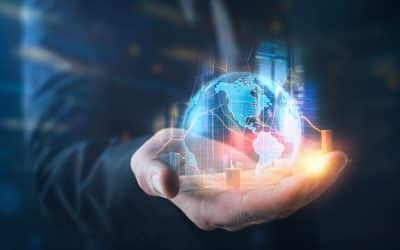From Crisis Comes Opportunity (For the Patient Investor)

Redacción Mapfre
From the perspective of the U.S. stock market, 2022 was a miserable year (with the S&P 500 declining 19.4%), but until recently, 2023 was shaping up to be a stronger year. January’s performance was particularly impressive, with the S&P 500 advancing more than 6%. In response, market participants cautiously began holding out hope for a soft landing.
But then, seemingly out of nowhere (the way most crises seem to start), a cryptocurrency lender named Silvergate Capital Corp failed, followed by Silicon Value Bank---the largest banking collapse in the U.S. since Washington Mutual in 2008 and then Signature Bank failed. As a result, bank customers throughout the U.S. who had deposits of more than $250,000 (the FDIC insurance cap) became concerned about the safety of their deposits. Regional banks such as First Republic, with their larger percentage of uninsured depositors, also experienced massive withdrawals, raising questions about their solvency.
What Caused These Events?
Multiple factors contributed to this situation, but chief among them was a swift increase in interest rates (the Fed funds rate was raised from basically 0% in March 2022 to a range of 4.75%-5.00% by March 2023) as the Fed responded to elevated inflation levels that proved less transitory than it initially expected. In the previous extremely low interest rate environment, certain banks (including those already mentioned), experiencing a surge in deposits, had reached for yield by purchasing longer-term securities. As rates increased, however, they faced significant unrealized losses on their investment portfolios, since bond prices move inversely with interest rates (in SVB’s case, more than $17 billion in potential losses as of year-end 2022, representing ~15% of cost). This alone would not normally cause banks to fail, especially since those with a strong financial position and stable deposit base could simply hold their relatively safe investments to maturity. However, the asset liability mismatch between short-term liabilities (deposits) and long-term assets (in some cases 10-year+ securities) created stress at these banks when depositors withdrew funds en masse (a bank run) upon hearing about the unrealized losses on the securities portfolio.
SVB was particularly hard hit, since its customer base was concentrated in technology startups whose deposits generally well-exceeded the FDIC insured threshold: as panic spread, in a single week SVB saw requests for withdrawal of $42 billion of its ~$173 billion (~24%) in total deposits (as of the end of the 4th quarter of 2022).
Is This the Global Financial Crisis 2.0?
Though no one can know the future, we do not expect that the current situation will develop into a full-blown banking crisis such as that of 2008-2009. For one thing, the world’s largest banks, such as JP Morgan and Bank of America, have much more stringent capital and risk controls than they did before the Global Financial Crisis. More important, however, we believe that the recent bank failures were heavily influenced by these banks’ specific business models and management rather than by systemic issues with the U.S. banking system. Specifically, they saw a surge in deposits over the past several years that was highly sensitive to movements in interest rates (“hot money”) as well as a downturn in the technology, cryptocurrency, and SPAC sectors. In general, these were not core customers who used banks for their everyday transactional needs.
We believe that the past week’s events came as a direct result of the Federal Reserve (and other central banks) having raised interest rates too rapidly after having held them too low for too long. The sudden rise in interest rates might have broken Silicon Valley Bank, Signature Bank, and Credit Suisse (which suffered additional losses from other events), but we do not believe that it has permanently altered the global financial system or the real economy. The Federal Reserve and other government authorities have tools that can help mitigate the damage sustained thus far while slowing or halting its spread.
Where Do We Go from Here?
Investors, however, are by no means out of the woods. Could stocks go lower, in the near term, from here? Absolutely. We have no idea what other trouble will arise because of the Federal Reserve’s botched monetary policy, but this seeming crisis, which should pass as previous ones have, has also created opportunities for us to initiate positions in high-quality businesses such as Charles Schwab, W.R. Berkley, and Citizens Financial Group for the Mapfre Forgotten Value Fund. Having already researched these companies extensively, we liked their fundamentals but refrained from purchasing them because we were waiting for more attractive entry points. Based on that same research, we were able to make our purchase decisions without delay when the market gave us the opportunity to buy what we believe are very good companies at attractive prices. If investors have the patience to withstand the current volatility, we believe that they should treat the current situation not as a crisis but as an opportunity.



